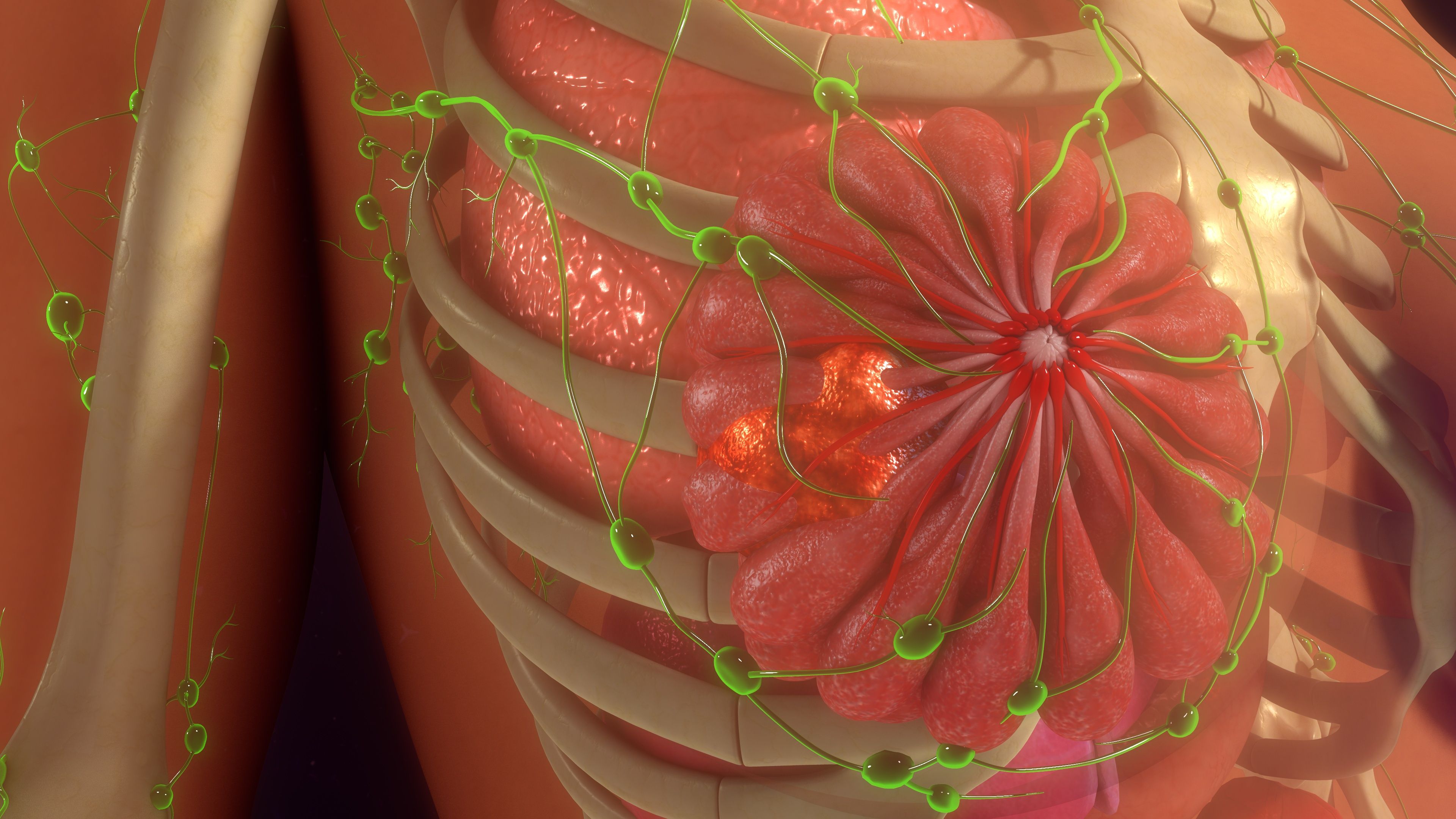News
Article
Immune Cells in Breast Cancer Subset May Lead to Better Survival
Author(s):
Certain levels of immune cells in the breast tissue were associated with better survival in triple-negative breast cancer, according to recent research.
Higher TIL levels were associated with better survival outcomes for certain patients with triple-negative breast cancer.

Patients with early-stage triple-negative breast cancer who did not receive chemotherapy before or after surgery were shown to have better survival outcomes, according to a recent study published in JAMA Network.
Researchers determined that patients whose breast cancer tissue had higher levels of tumor-infiltrating lymphocytes (TIL; immune cells) were associated with “significantly better survival,” they wrote.
“This is an important finding because it highlights that the abundance of TILs in breast tissue is a prognostic biomarker in people with early-stage triple-negative breast cancer, even when chemotherapy is not administered,” Dr. Roberto Leon-Ferre, said in a news release. “The study’s findings may inspire future clinical trials to explore whether patients with a favorable prognosis [high TILs] can avoid intense chemotherapy regimens.”
Leon-Ferre is a breast medical oncologist at Mayo Clinic Comprehensive Cancer Center and author of the JAMA Network study.
Triple-negative breast cancer means cancer cells don’t have estrogen or progesterone receptors and do not produce any or much of the HER2 protein. This form of breast cancer accounts for approximately 10% to 15% of all breast cancers, according to the American Cancer Society.
READ MORE: Keytruda, Chemo Show Early-Stage Breast Cancer Event-Free Survival Benefits
The study included 1,966 patients with triple-negative breast cancer, of which the median age was 56 years old and 55% of patients had stage 1 triple-negative breast cancer. The researchers found that the median TIL level in patients was 15%. Approximately 21% of patients had a TIL level of 50% or higher, whereas 66% of patients had a TIL level of 30% or lower.
The main outcome measured in the study was invasive disease-free survival (living without invasive disease returning), the researchers noted. Their findings determined that each increased increment of 10% for TIL levels was directly associated with improved invasive disease-free survival.
"TILs are not currently measured or reported in the routine examination of tissue samples of breast cancer," Dr. Matthew Goetz, co-senior study author and medical oncologist at Mayo Clinic Comprehensive Cancer Center, said in the release. “While prior studies have focused on measuring TILs in people treated with chemotherapy, this is the largest study to comprehensively demonstrate that the presence of TILs influences the natural behavior of breast cancer in people who have surgery and/or radiation with no additional medical treatment."
Secondary outcomes measured in the study included recurrence-free survival, distant recurrence-free survival and overall survival (time from diagnosis when a patient lives with cancer, regardless of its status). Researchers also determined that having a 10% increased increment of TIL levels also directly improved recurrence-free survival, distant recurrence-free survival and overall survival at a median follow-up of 18 years.
The five-year distant recurrence-free survival rate was 94% for patients who had stage 1 triple-negative breast cancer and a TIL level of 50% or more, according to the study. This was compared with a five-year distant recurrence-free survival of 78% in patients with a TIL level of less than 30%.
Of note, the overall survival over five years was 95% in patients with a TIL level of 50% or higher and 82% for patients whose TIL levels were less than 30%.
"Five years after surgery, 95% of participants with small tumors, stage 1 [triple-negative breast cancer], and whose tumors had high TILs were alive, compared to 82% of patients whose tumors had low TILs. Importantly, the breast cancer recurrence rate was significantly lower among patients whose tumors had high TILs," co-senior author Stefan Michiels, head of Oncostat team at University Paris-Saclay, said in the news release. “With nearly 2,000 participants involved in the study, we have now assembled the largest international cohort across three continents of people with [triple-negative breast cancer] in which the primary treatment was surgery without chemotherapy."
For more news on cancer updates, research and education, don’t forget to subscribe to CURE®’s newsletters here.




